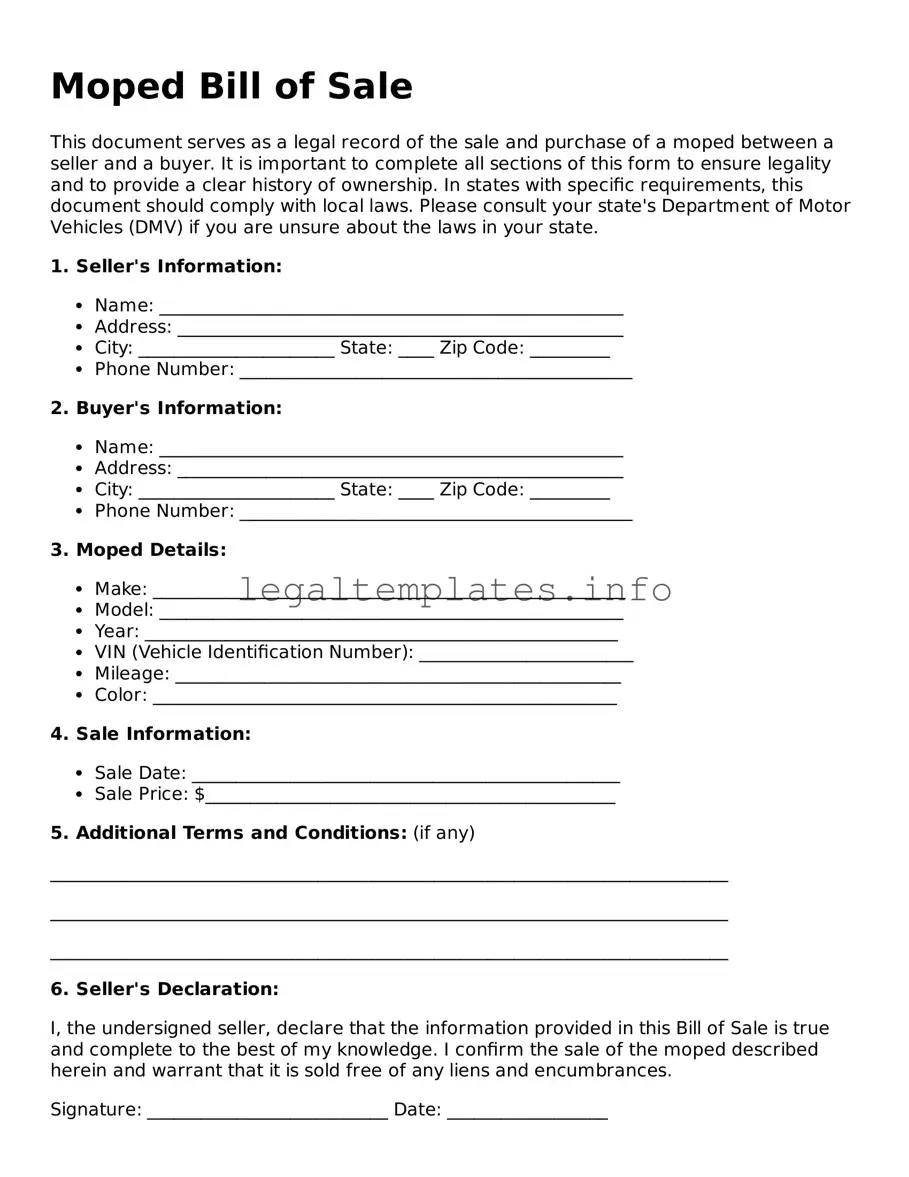The Moped Bill of Sale form closely parallels the Car Bill of Sale document in its function and structure. Both serve as legal evidence that the ownership of a vehicle (in these cases, a moped and a car respectively) has been transferred from one party (the seller) to another (the buyer). These documents typically contain vital information such as the make, model, year, identification numbers, and purchase details, ensuring the transaction is registered according to state laws.
Similarly, the Motorcycle Bill of Sale form shares a primary purpose with the Moped Bill of Sale. It records the transaction and transfer of ownership of a motorcycle from one individual to another. This document equally includes key transaction details like the sale price, date of sale, and identifying details of the motorcycle, which are crucial for legal and registration purposes.
A Boat Bill of Sale document is another which mirrors the essence of the Moped Bill of Sale. It's used to confirm and legalize the sale and purchase of a watercraft. Just like its counterparts for mopeds, cars, and motorcycles, it lists the vessel’s details, the identities of the buyer and seller, and the sale specifics. This ensures both parties have a record of the transaction for registration and legalities surrounding the ownership transfer.
The Aircraft Bill of Sale is utilized in the sale and purchase transactions of airplanes, bearing resemblance to the Moped Bill of Sale. It chronicles the change of ownership, detailing the aircraft's make, model, serial number, and the transaction's specifics. Despite the difference in the type of vehicle, the fundamental purpose—to provide a legal record of sale and ownership transfer—remains the same.
A comparison can also be drawn to the General Bill of Sale, which is a versatile document used for transferring ownership of personal property from one party to another. This could range from furniture to electronic gadgets, differing in the item being sold, but not in the document's core function. Like the Moped Bill of Sale, it outlines the details of the transaction, ensuring a mutual understanding and agreement between the seller and buyer.
The Pet Bill of Sale stands as another equivalent, specifically in the context of selling and buying pets. Although it pertains to animals rather than vehicles or general property, the principles align with those of the Moped Bill of Sale. It includes detailed information on the pet (such as breed, age, and health status), alongside sale conditions, providing a comprehensive record of the transfer of ownership.
Lastly, the Firearm Bill of Sale document is comparable in its purpose of recording the sale and transfer of ownership of a gun from the seller to the purchaser. It is vital for ensuring the legality of the transaction, detailing the firearm's make, model, serial number, and buyer and seller information. Similar to the Moped Bill of Sale, this document plays a crucial role in the responsible and legal transfer of ownership.
